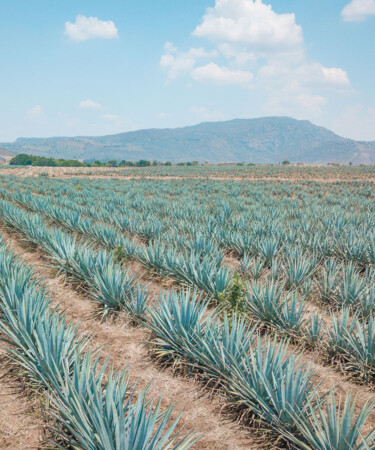Over the past decade, tequila has experienced a meteoric rise in sales in the U.S. But after years of unencumbered growth, it seems the consequences of the tequila boom are catching up to the industry.
IWSR Drinks Market Analysis reported this week that agave prices are plummeting in Mexico. After hitting a record-high price of MXP32 ($2) per kilogram only 18 months ago, it fell to only MXP5 ($0.30) per kilogram by February 2024. The IWRS noted that it expects prices to continue to drop as the number of new agave plants rises.
The agave price crash can be directly linked to the changes in the availability of plants. In response to tequila’s massive growth in sales in the past few years, growers planted more agave to keep up with demand. But agave plants take several years to mature, so the plantings took time to catch up to the producer’s needs. Now, as these plants reach a productive age, there’s an abundance of agave for tequila production. IWSR shared that the number of new plants increased by more than 10 percent between 2021 and 2022 alone, and the number of registered agave growers has more than quadrupled since 2018.
The decline of agave prices coincides with a moderation of the premium tequila demand in the U.S. While this category was the fastest-growing price range, driving much of tequila’s growth, the hype around these high-end bottlings seems to be cooling off in the U.S. market. Plus, tequila exports to the U.S. actually dropped for the first time since 2009 last year. These factors are leading to a level of apprehension about how to proceed in the tequila industry.
“The very large inventory of agave plants, coupled with slowing demand of premium tequila segments in the U.S. after years of rapid growth, has sparked a panic sale among amateur agave growers who have recently joined the industry in a bid to cash in on the agave spirits boom,” IWSR research director for Central and South America, Jose Luis Hermoso, told IWSR. “With such huge numbers of new plants going into the ground in 2021 and 2022, it’s entirely possible that pricing will not hit the bottom until 2026.”
The lower cost of agave should provide producers an opportunity to craft quality products at lower price points, invest in marketing, and develop international markets with the extra supply. However, IWSR mentions that some producers might not take this route, stating: “brand owners will be wary of sacrificing their recently acquired brand equity by slashing prices.”
This unbalanced cycle of availability and demand is common amongst products that require a long lead-time to produce, and the cycle for tequila typically occurs over every 10 to 15 years. IWSR mentions that 2007 to 2010 marked the last pricing trough, with agave prices dropping to MXP2 per kilogram.
“Logically, we would expect to see an influx of cheaper 100 percent agave tequila into the market in the near future — so, potentially, a higher-quality product at a lower price, which might attract new consumers and/or encourage trade-down,” IWSR COO for Consumer Research, Richard Halstead told IWSR. “The last time we saw a supply glut similar to this was around 2009-10, when numerous new brands came to the market using the 100 percent agave description, but at prices significantly lower than the majority of incumbent 100 percent agave brands.”
So, as producers decide how to proceed with the new influx of agave, we can potentially look forward to more great value bottles of 100-percent agave tequila.
This story is a part of VP Pro, our free content platform and newsletter for the drinks industry, covering wine, beer, and liquor — and beyond. Sign up for VP Pro now!
